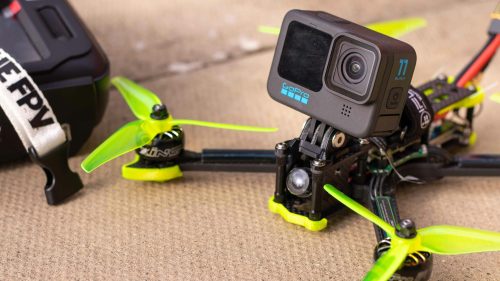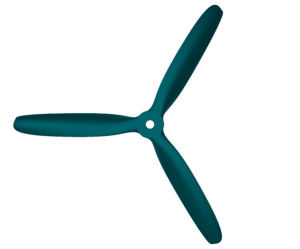
Elevating Imagination
Exploring FPV Drones: Unveiling the First-Person View Revolution
In the realm of modern drone technology, FPV drone have emerged as a fascinating innovation, providing pilots with a unique and immersive perspective. FPV, which stands for “first-person view,” refers to the real-time video transmission from a camera on the drone to a headset or goggles worn by the operator. This technology allows pilots to experience the world from the drone’s point of view.
FPV drones, often distinguishable by their smaller and lighter builds compared to traditional drones, are equipped with powerful motors and batteries. This enhanced power, coupled with a live video feed, makes them ideal for a range of activities, from racing and freestyle flying to photography and filmmaking.

How Does an FPV Drone Work?
At the heart of an FPV drone’s operation is the real-time video transmission from the drone’s camera to the pilot’s headset or goggles. This transmission occurs via a radio frequency (RF) transmitter, which is affixed to the drone, and a receiver, which is part of the pilot’s gear. The video signal travels from the drone’s camera to the receiver, allowing the pilot to see precisely what the drone sees in real time.
Moreover, some FPV drones are equipped with sensors such as gyroscopes, accelerometers, and magnetometers. These sensors play a role in ensuring the drone’s smooth and stable flight. They also provide the pilot with essential data about the drone’s orientation and speed, enhancing control.
Benefits of Using an FPV Drone:
- Immersive Experience: The foremost benefit of FPV drones is the unparalleled immersion they offer. Pilots feel as if they are physically present within the drone, experiencing the world from its unique vantage point.
- Unique Footage: FPV drones excel at capturing extraordinary and immersive footage. The ability to perceive the world through the drone’s perspective allows filmmakers and photographers to obtain angles and perspectives that were previously unattainable with traditional cameras.
- Agility and Manoeuvrability: FPV drones are prized for their agility and manoeuvrability, making them exceptionally well-suited for racing, freestyle flying, and capturing dynamic shots in challenging environments.
Challenges of Using an FPV Drone:
While FPV drones offer exciting possibilities, there are challenges to consider:
- Cost: FPV drones tend to be pricier than traditional drones due to their more advanced electronics and components.
- Complexity: Setting up and piloting an FPV drone can be more complex than operating traditional drones. Pilots must understand and configure various electronic components.
- Safety: FPV drones pose risks if not operated responsibly. Pilots need to be mindful of their surroundings, avoid obstacles and other aircraft, and adhere to safety guidelines.
In summary, FPV drones are a valuable tool for various applications, but it is essential to grasp both their benefits and challenges before taking to the skies.

Types of FPV Drone:
There are primarily two types of FPV drones:
- Racing Drones: Racing drones prioritise speed and agility, typically featuring robust motors and lightweight frames that make them perfect for high-speed races around challenging courses.
- Freestyle Drones: Freestyle drones are tailored for performing stunts and tricks, characterised by their durable frames, often equipped with prop guards to shield the propellers from harm.
- Cinewhoops: Cinewhoops are specialised for cinematic filming and photography. They stand out with high-quality cameras and gimbals, along with prop guards to safeguard the propellers from potential damage.
- Long-Range Drones: Long-range drones excel in covering vast distances, thanks to their large batteries, efficient motors, and advanced features like GPS and telemetry.
- Micro Drones: Micro drones, compact and lightweight, are ideal for indoor flying. While they may lack the power of larger counterparts, they compensate with enhanced agility and manoeuvrability.
- acing Quads: Among racing drones, racing quads reign supreme as the most popular choice. These quads are known for their four propellers, optimised for maximum speed and agility during competitive racing events.
Parts of an FPV Drone:
Key components of an FPV drone include:
- Frame: The frame provides structural support for the other components.
- Motors and Propellers: Motors and propellers generate lift and propel the drone.
- Flight Controller: The flight controller is the drone’s central control system, responsible for stability and navigation.
- Camera: The camera transmits live video to the pilot’s headset or goggles.
- Transmitter and Receiver: These facilitate the real-time video feed from the drone to the pilot.
- Battery: The battery supplies power to the drone’s motors and other components.
Safety Tips for Flying FPV Drones:
When operating FPV drones, adherence to safety measures is paramount:
- Choose a safe, open area away from people and obstacles for flying.
- Maintain awareness of your surroundings.
- Always fly at altitudes below the maximum limit.
- Consider having a spotter to assist in maintaining awareness of your drone’s position.
- Avoid flying in adverse weather conditions.
- Be considerate of others and respect their property.
FPV drones deliver an unparalleled experience and are incredibly enjoyable to fly. However, it is essential to prioritise safety and responsibility when using these devices. By adhering to safety guidelines, you can minimise risks, prevent accidents, and fully embrace the excitement of piloting an FPV drone.
